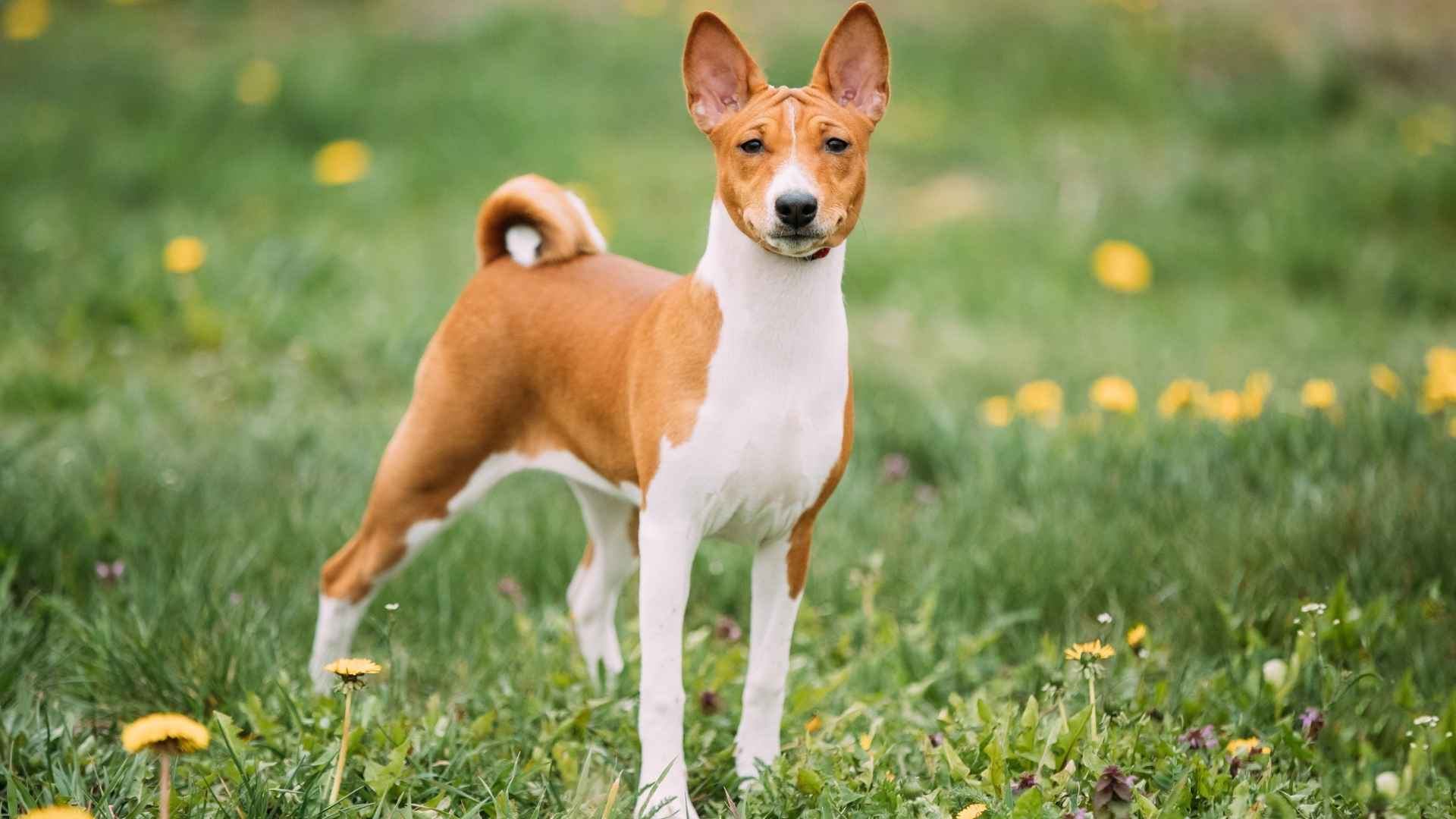Did you know some dogs behave more like cats than typical dogs? They like to keep to themselves, clean themselves often, and enjoy quiet spots just like your favorite feline. It’s surprising, but true—some dog breeds share many habits we usually see in cats.
This article will show you seven dog breeds known for acting like cats. You’ll learn what makes them different from most dogs, how they stay clean, why they like alone time, and what to expect if you bring one into your home.
Whether you’re curious or thinking about a new pet, this guide gives you clear facts about these cute dogs.
Dog Breeds Who Act Like Cats
1. Chows Chows
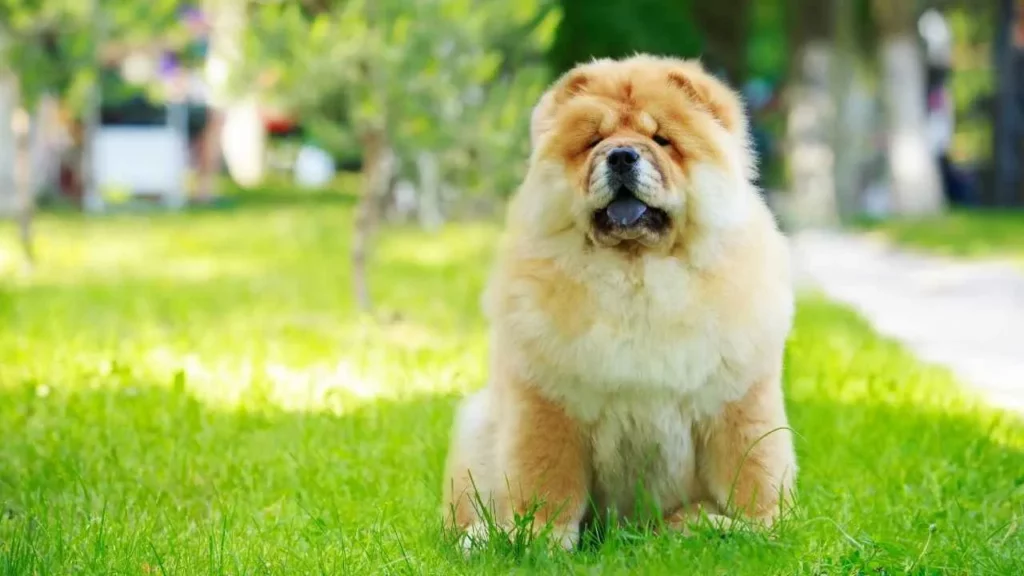
Chow Chows are on the top of our list because of their cool, calm vibe and how picky they are about their space. They don’t rush to greet everyone. Rather, they take their time, sizing people up from a distance.
Like cats, they’re clean freaks, always grooming themselves and rarely smelling like a typical dog. They’re quiet, serious, and a bit reserved, not the type to demand constant attention or play nonstop.
They come from ancient China, dating back to the Han dynasty (yeah, they’ve been around for thousands of years). With their thick lion-like mane and stiff-legged walk, they stand out in the dog world. Their genetics even tie them closely to wolves, which might explain their proud and independent streak.
Personality-wise, these dogs are fiercely loyal. They bond deeply with just one or two people and want to protect them. They’re not fans of crowds or loud chaos; too many new faces will either make them guard like crazy or retreat to a quiet corner. They want to be your one-and-only, no competition.
|
Trait |
Details |
|
Area of Origin |
Ancient China |
|
Breed Group |
Nonsporting |
|
Height at Withers |
17–20 inches |
|
Weight |
45–70 pounds |
|
Life Span |
8–12 years |
2. Afghan Hound
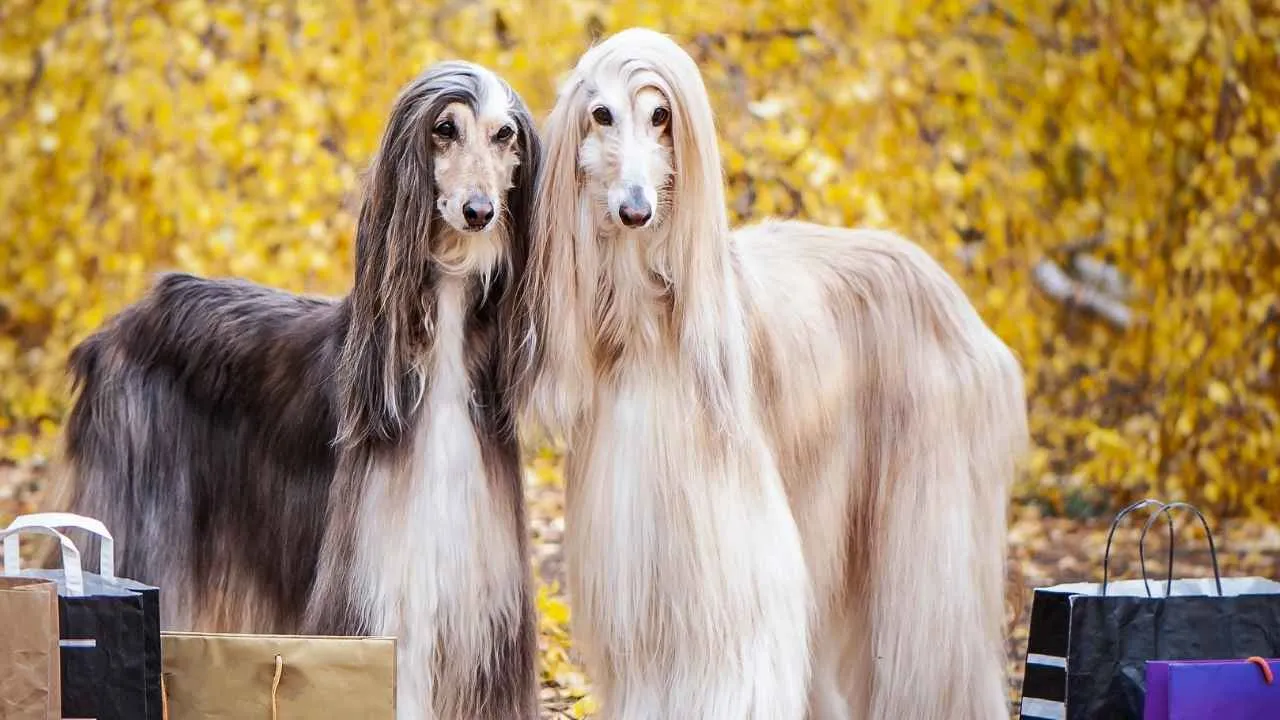
Here’s another breed known for its love for alone time and independence. These elegant dogs are sweet yet strong-willed, as they don’t rush to follow commands and prefer doing things their own way. Just like cats, they’re amazing jumpers and can clear short fences, so if you have one, make sure your yard is secure.
These hounds have long silky coats that need regular brushing, but here’s the good news: they’re hypoallergenic. They have got elite looks too; floppy ears, a long topknot, and a tail that curls up.
AKC adds that they come from the rough hill country of Afghanistan, bred to chase fast prey like leopards and gazelles by sight. Their body is built for agility, with wide hips and long legs that help them navigate tough terrain.
|
Trait |
Details |
|
Area of Origin |
Afghanistan |
|
Breed Group |
Hound |
|
Height at Withers |
25–27 inches |
|
Weight |
50–60 pounds |
|
Life Span |
12–14 years |
3. Saluki
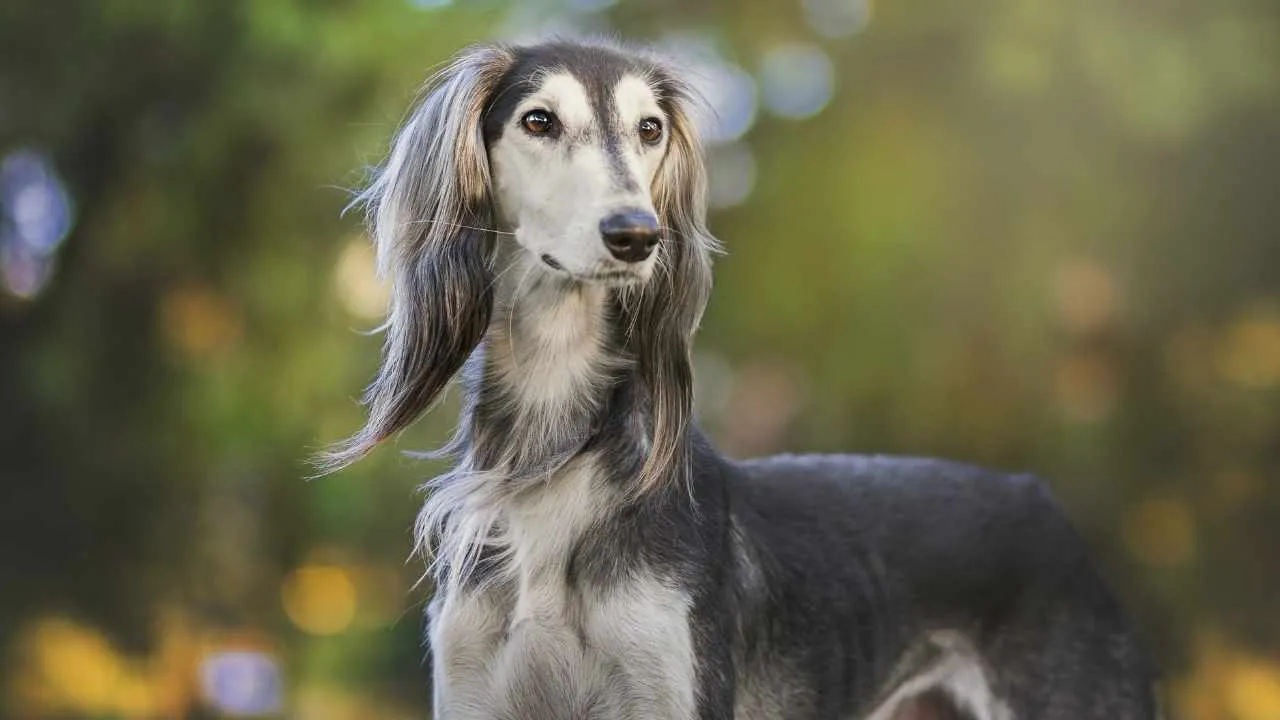
Salukis are graceful, quiet, and loyal dogs with a sleek, slender build. They’ve been around since ancient times, cherished by pharaohs and Bedouin nomads alike. Known as the “royal dog of Egypt,” they’re built for speed and have a calm & affectionate nature. They need daily exercise but also love to lounge and relax, showing off a perfect mix of energy and chill.
Salukis have a quiet, graceful nature with a cat-like walking style. They’re calm most of the day, enjoying naps and low-key time, but when it’s time to run, they burst into quick, powerful sprints. Like cats, they’re independent and can be a bit shy around strangers, preferring to stick close to their trusted people.
Some of these have silky, longer hair on their ears and tails (called the feathered variety), while others have short coats all over. Their colors range from creamy tans to reds, black and tan, and even grizzled shades, as PetMD notes.
Taking care of a Saluki means regular grooming for the feathered types, especially combing their ear and tail hair a couple of times a week to keep it tangle-free. They don’t need frequent baths, but their nails and teeth do need attention, and their ears should be checked regularly.
|
Trait |
Details |
|
Area of Origin |
Ancient Egypt and the Middle East |
|
Breed Group |
Hound |
|
Height at Withers |
23–28 inches |
|
Weight |
38–65 pounds |
|
Life Span |
11–13 years |
4. Borzoi
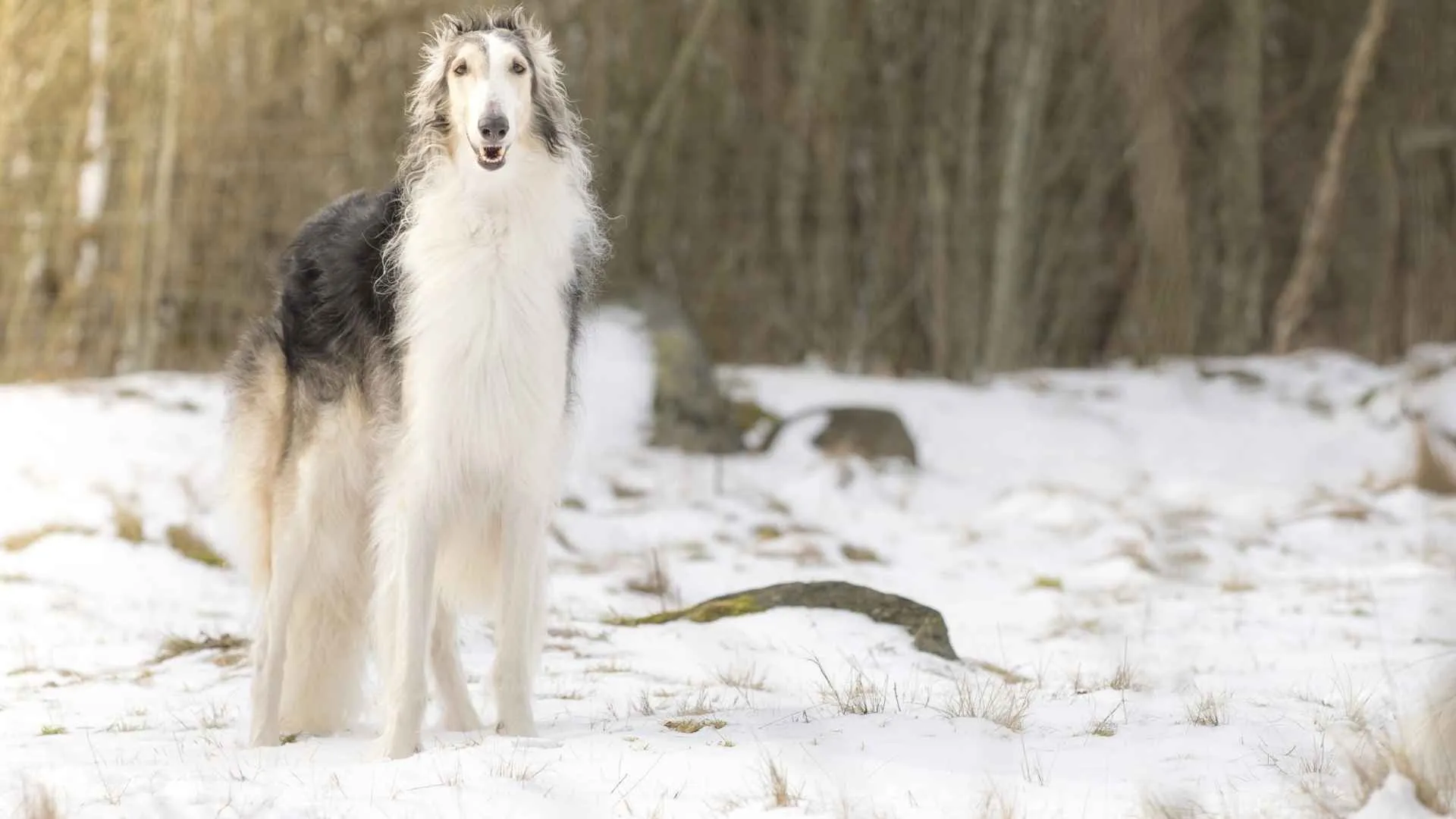
This breed loves to lounge around most of the day, just like cats. They’re gentle and graceful, moving with a smooth, almost elegant way that reminds you of a cat’s effortless style. They’re not loud or needy; more like chill companions who enjoy their space and move on their own terms.
Borzois come from Russia, where they were bred to chase wolves. They’re a mix of Arabian Greyhounds and Russian sheepdogs, making them strong, fast, and built for long runs. Back in the day, Russian aristocrats kept hundreds of them for huge wolf hunts, and later, these dogs became a symbol of class, even showing up in old Hollywood photos with movie stars.
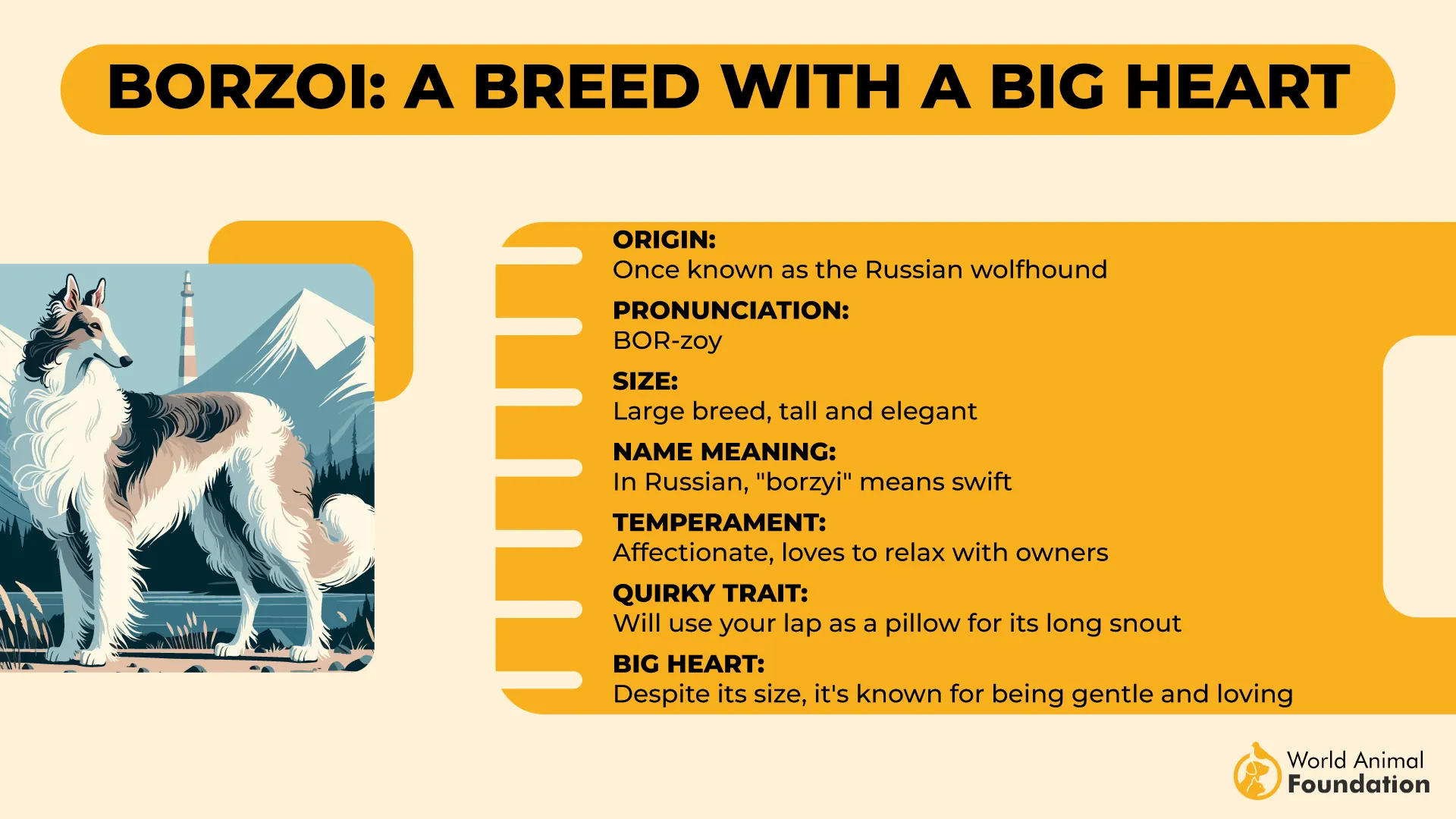
Personality-wise, Borzois are sensitive and gentle, happy to take it easy after their daily exercise. They usually get along with older kids and other dogs, but can be a bit rough around tiny children because of their size. They might chase small animals outside, but tend to be calm indoors. They’re smart but can get bored with training, so patience is key.
|
Trait |
Details |
|
Former Name |
Russian Wolfhound |
|
Area of Origin |
Russia (Middle Ages) |
|
Breed Group |
Hound |
|
Height at Withers |
26–34 inches |
|
Weight |
60–105 pounds |
|
Life Span |
9–14 years |
5. Japanese Chin
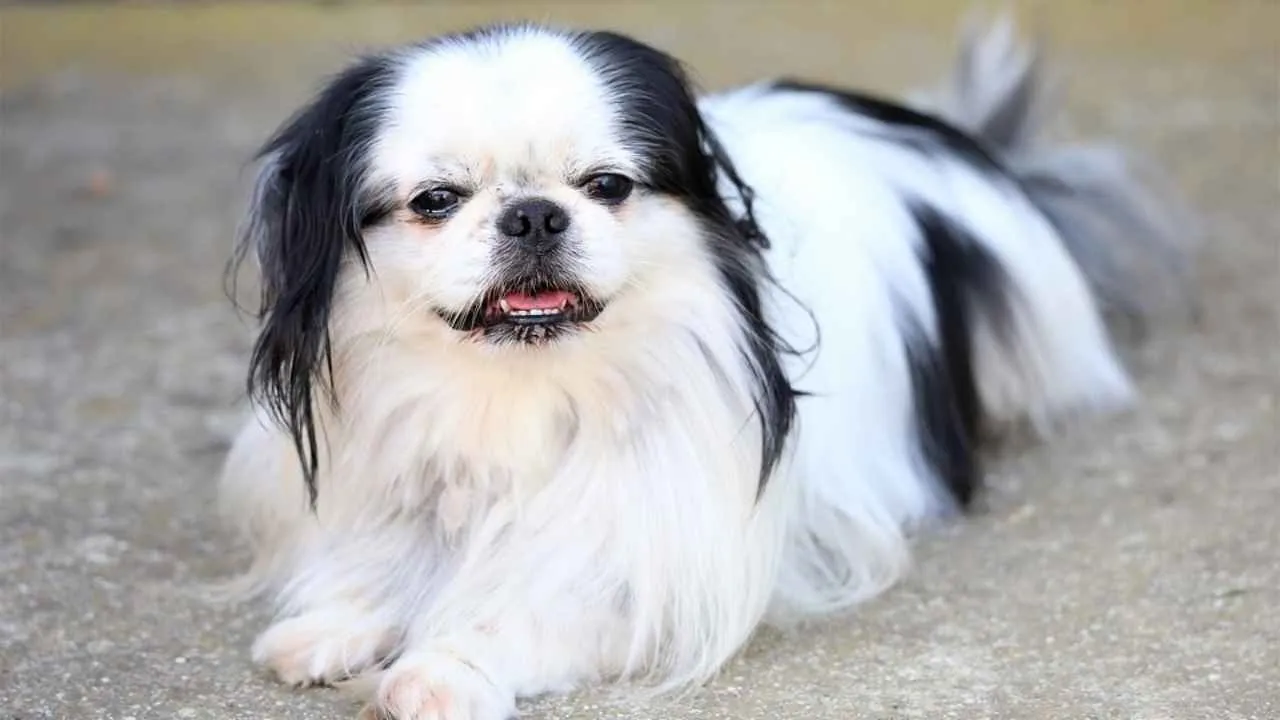
These dogs catch your eye with their flat faces, wide eyes that seem forever surprised, and those long, silky ears that flop just right. Originally thought to come from China, they found a true home in Japan and quickly became beloved lap dogs with a vocal, charming personality.
These pups love to climb and perch in high spots, groom themselves meticulously, and can even be trained to use a litter box. They become great companions to their owners but might be a little shy with strangers at first. They thrive with company and don’t do well if left alone in the house too long; separation anxiety is a real thing for them.
When it comes to care, they’re fairly low-key. Daily short walks and gentle play suit them best. Because of their delicate necks, a harness is better than a collar on walks. Their glossy coat is easier to manage than many long-haired breeds, but still benefits from regular grooming.
|
Trait |
Details |
|
Area of Origin |
China (or possibly Korea) |
|
Breed Group |
Toy |
|
Height at Withers |
8–11 inches |
|
Weight |
4–9 pounds |
|
Life Span |
10–14 years |
6. Italian Greyhound
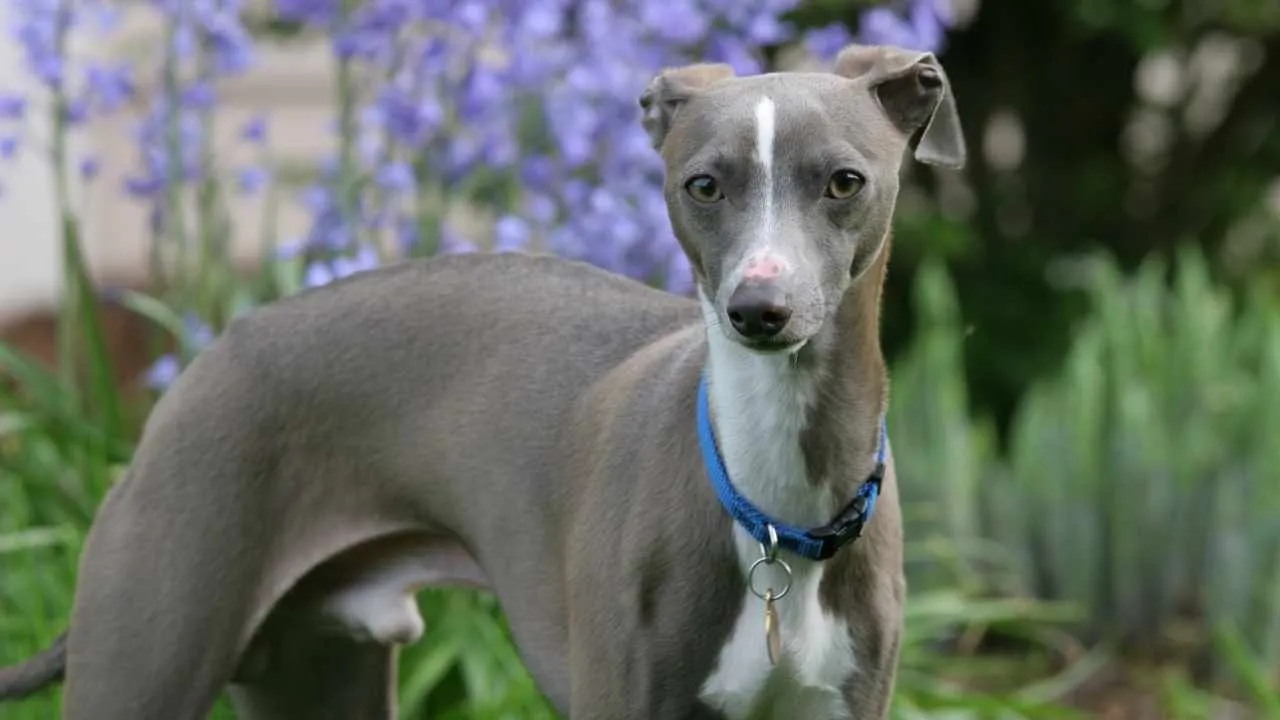
Originally from Italy, Italian Greyhounds have been around for over 2,000 years. They were companions and small-game hunters, adored by royalty and nobles like Catherine the Great and Queen Victoria. Today, they’re still elegant, affectionate, and make great pets for apartments.
Italian Greyhounds are sensitive and sociable. They get along well with humans and other dogs, but hate being alone, so having a buddy is a big plus. Also, they’re sensitive to cold because of their thin coat, so sweaters are often needed in chilly weather.
Regarding their exercise needs, these canines enjoy daily walks and playtime, but they also love to jump and sprint around in safe spaces. Mental challenges like puzzle toys or dog sports keep them happy, too. Just watch those delicate legs—they’re prone to injury.
|
Trait |
Details |
|
Area of Origin |
Italy |
|
Breed Group |
Toy |
|
Height at Withers |
13–15 inches |
|
Weight |
7–14 pounds |
|
Life Span |
14–15 years |
7. Basenji
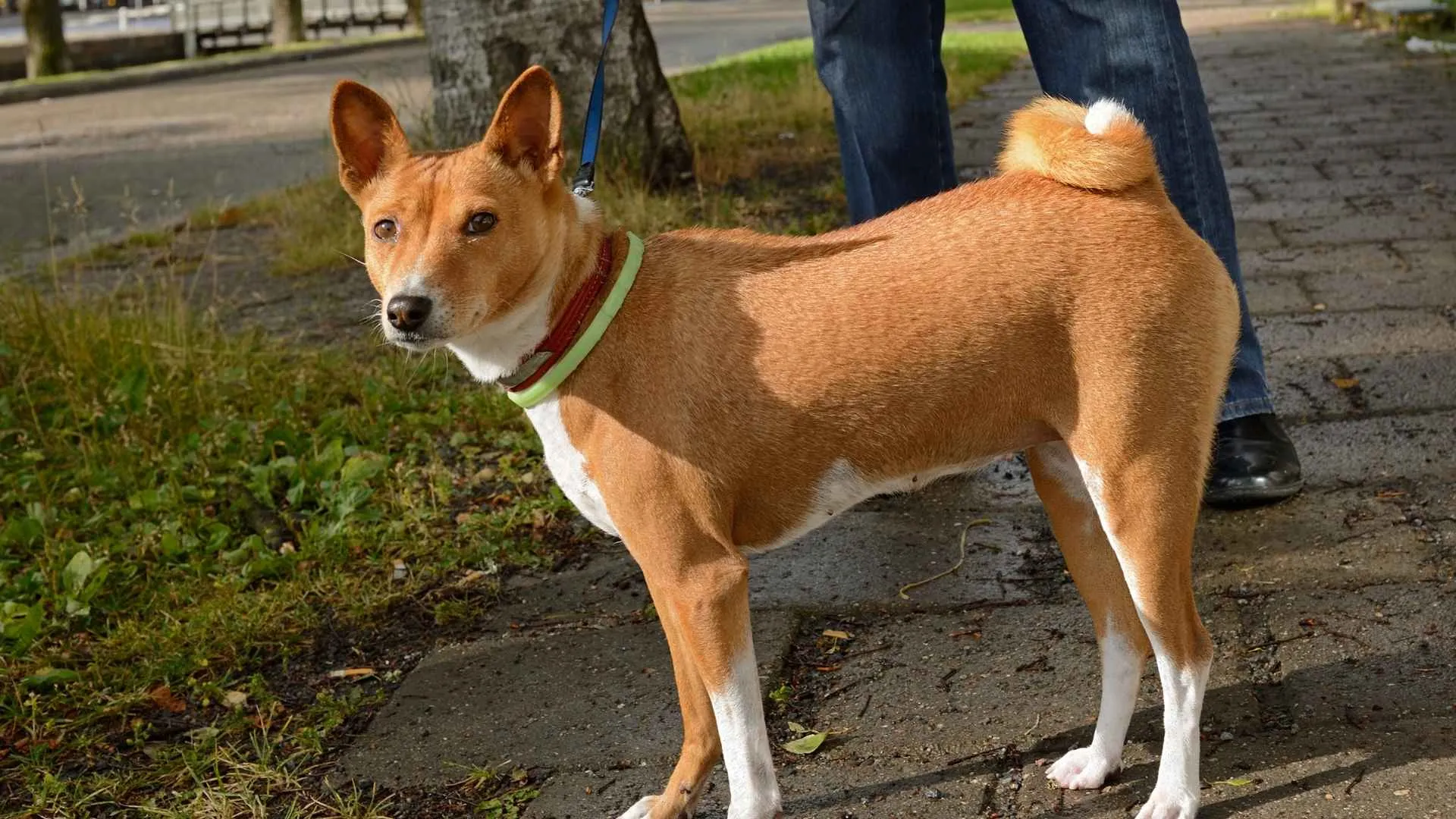
The Basenji is an ancient dog from Central Africa. It used to live freely in villages, not really owned by anyone. These dogs are known for being quiet—they don’t bark like most dogs, but make unique sounds like a yodel instead. They’re smart, sleek, and graceful, with a curly tail and wrinkled forehead that give them a very alert look.
Basenjis clean themselves like cats do, so they don’t smell like typical dogs, as per Purina. They only shed a little and need just weekly brushing and occasional baths. They’re active dogs who love to run, chase, and explore, but they can be stubborn and don’t always come when called, so they need to be in a safe, fenced area if off-leash.
They don’t really like cuddling or hanging too close, but they make good watchdogs. Basenjis can be tricky to train because they’re independent and like doing their own thing. They also need regular exercise to stay happy and avoid boredom.
|
Trait |
Details |
|
Origin |
Central Africa |
|
Group |
Hound |
|
Height |
16–17 inches (41–43 cm) |
|
Weight |
22–24 pounds (10–11 kg) |
|
Lifespan |
13–14 years |
Conclusion
In conclusion, while dog people and cat people may seem worlds apart, there are some dog breeds that truly bridge the gap, offering the playful affection of a puppy with the laid-back temperament of cat breeds. While we’ve covered many great examples, Shiba Inu, Italian Greyhound, and Whippet are special mentions we’ll highlight in another list. It’s their calm and independent nature that reminds many people of popular cat breeds, like the Burmese cat.
Most of these breeds are small breeds, great for sharing the same space with other animals and other pets, and they often enjoy doing their own thing. Some are total couch potatoes, while others like to play games with their favorite human, then settle down for a rest. They’re usually highly intelligent, with a sweet, gentle temperament that makes them a great companion for families or a single person.


